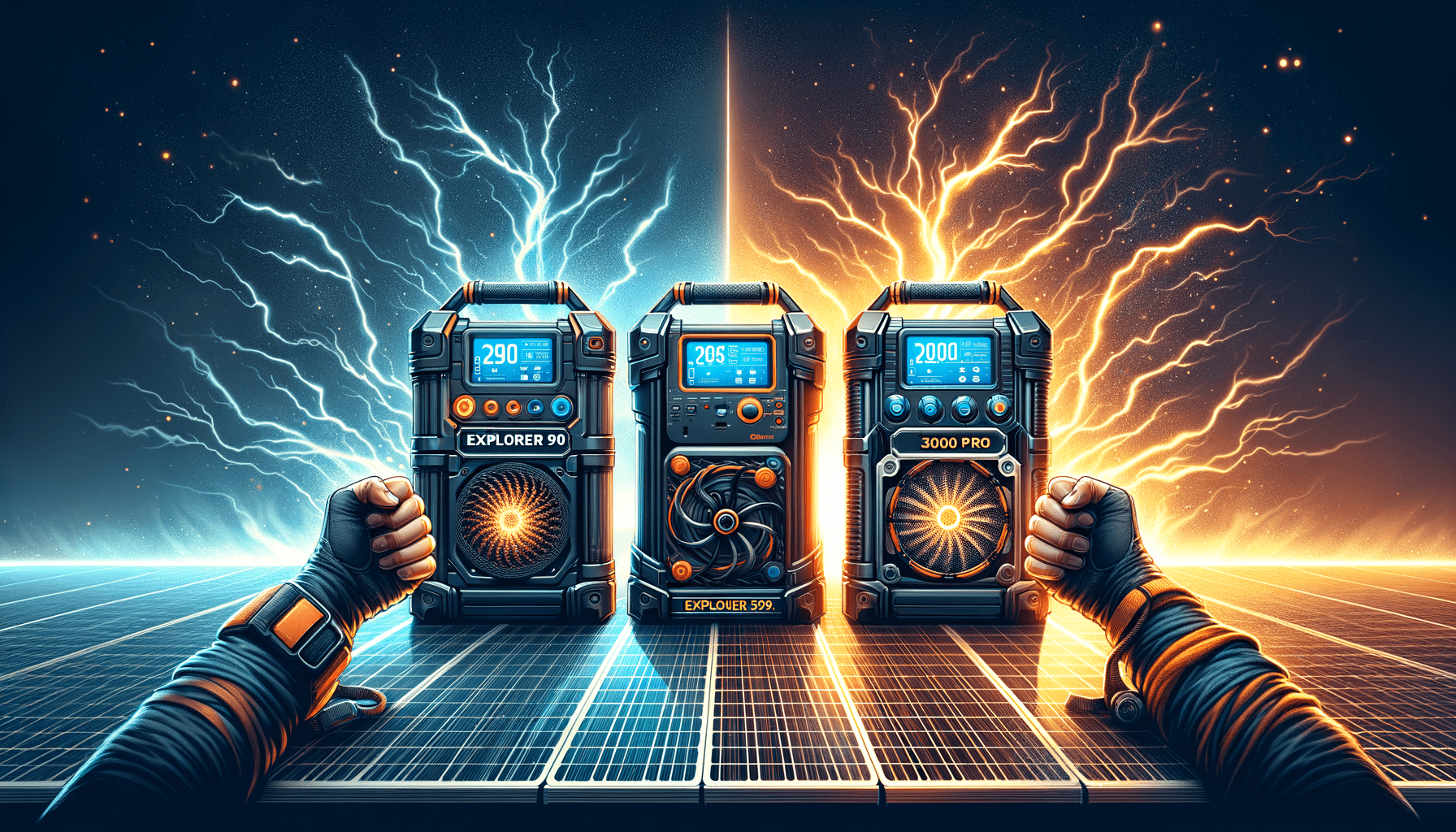Hey there, friends of the great outdoors and all tech aficionados! Today, we’re delving deep into two portable power behemoths – the Jackery Explorer 300 Plus and the Bluetti EB70S. Whether you’re looking to power your camping trip or need a reliable source during a blackout, this comparison will help you choose the perfect companion for your electrical needs.
Introduction
You’re probably wondering, between the Jackery 300 Plus and the Bluetti EB70S, which power station should earn a spot in your adventure gear. Both are strong contenders in the portable power arena, but they have unique features that might sway you one way or the other.
Power and Capacity
Let’s kick things off by comparing what’s under the hood. The Jackery 300 Plus is equipped with a 288Wh battery and boasts an output of 300W. The Bluetti EB70S, on the other hand, packs a punch with a 716Wh battery and an 800W output. If you’re looking for sheer power and capacity, the EB70S leads the charge.
Portability
If portability is your primary concern, the Jackery 300 Plus is lighter at 8.27 lbs, making it a breeze to carry on hikes or trips. The Bluetti EB70S, weighing in at 21.4 lbs, is a bit heftier but still manageable for most users.
Charging Options
When it comes to juicing up your devices, both models offer a variety of ports, but there are some differences. The Jackery features dual USB-C ports with 100W capacity each, while the Bluetti includes not only the USB-C ports but also a 15W wireless charging pad for added convenience.
Battery Life
The longevity of your portable power station is critical, especially when you’re counting on it in the wild. The Bluetti’s LiFePO4 battery promises more than 2,500 life cycles, while the Jackery’s LFP battery is set for extended use over many years, provided it’s recharged every three days.
Charging Speed
A quick recharge is essential for those on the go. The Jackery can get back to full power via wall outlet in just 2 hours, while the Bluetti requires 4-4.5 hours. However, solar charging times are comparable when conditions are ideal.

| Feature | Jackery Explorer 300 Plus | Bluetti EB70S |
|---|---|---|
| Battery Capacity | 288Wh | 716Wh |
| Weight | 8.27 lbs | 21.4 lbs |
| Max Output | 300W | 800W |
| Life Cycles | Up to a decade (with frequent recharges) | 2,500 to 80% capacity |
| Charging Speed (Wall) | 2 hours | 4-4.5 hours |
| Warranty | 3+2 years | 24 months |
| Wireless Charging | No | Yes |
| Price | Moderate | High |
| Best For | Lightweight portability & moderate power needs | Higher capacity needs & longer life cycles |
Safety and Warranty
Safety shouldn’t be an afterthought, and thankfully, both Jackery and Bluetti take it seriously with multiple protective mechanisms in place. As for peace of mind, Jackery offers a 3+2 year warranty, while Bluetti provides a standard 24-month warranty, so Jackery gets the edge for long-term reliability.
Ergonomics and Use
Both models are designed with ease of use in mind. The Jackery has a simple, intuitive interface and can be managed via a smart app. The Bluetti’s ergonomic handle makes it easy to lug around, although it lacks the smart app compatibility.
Environmental Impact
If you’re eco-conscious, you’ll be glad to know both power stations can be charged using solar panels. This not only reduces carbon footprint but also ensures power autonomy off-grid.
Final Thoughts
Picking between the Jackery Explorer 300 Plus and the Bluetti EB70S comes down to what you prioritize: if it’s portability and quick charging, Jackery is your best bet. If you need more power and capacity with a longer battery life, then the Bluetti is the powerhouse you’re after.

There you have it! We hope this comparison clarifies the strengths of each model and sets you on the right path to purchasing the power station that fits your adventures best. Stay powered up and ready for whatever comes your way!


Leave a Reply